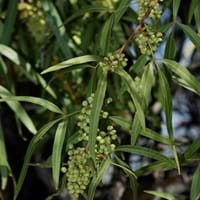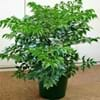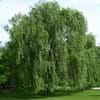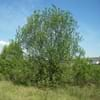Life Span
Perennial
Not Available
Origin
Southeastern Asia, China
Southern Africa, South Africa
Types
Not Available
Not Available
Habitat
Clay soil areas, Subtropical forests
Forest margins, Grassland, Mountains, Pastures, Rocky Ridges, Woods
USDA Hardiness Zone
10-11
8-11
Sunset Zone
H1, H2, 22, 23, 24
8, 9, 12, 13, 14, 15, 16, 17, 18, 19, 20, 21, 22, 23, 24
Habit
Spreading
Spreading
Flower Color
White, Gold
Light Green, Ivory
Flower Color Modifier
Bicolor
Bicolor
Fruit Color
Not Available
Yellow, Red
Leaf Color in Spring
Green, Dark Green
Green
Leaf Color in Summer
Dark Green
Dark Green
Leaf Color in Fall
Dark Green
Dark Green
Leaf Color in Winter
Dark Green
Dark Green
Leaf Shape
Heart-shaped
Lance shaped
Plant Season
Spring, Summer, Fall, Winter
Spring, Summer, Fall, Winter
Sunlight
Partial Sun, Partial shade
Full Sun, Partial Sun, Partial shade
Type of Soil
Loam, Sand
Loam, Sand
The pH of Soil
Acidic, Neutral
Neutral, Alkaline
Soil Drainage
Well drained
Well drained
Bloom Time
Spring, Late Spring, Early Summer, Summer
Early Spring
Tolerances
Not Available
Pollution, Drought
Where to Plant?
Ground
Ground
How to Plant?
Seedlings, Spores, Stem Cutting
Seedlings, Stem Planting, Transplanting
Plant Maintenance
Medium
Medium
Watering Requirements
Allow to dry out slightly between watering, Needs 2-3 times watering per week
Form a Soil ring to water efficiently, Use and maintain water-efficient soaker hoses, Use Mulches to help prevent water loss during hot and windy weather, Water Deeply
In Summer
Lots of watering
Lots of watering
In Spring
Moderate
Moderate
In Winter
Average Water
Average Water
Soil pH
Acidic, Neutral
Neutral, Alkaline
Soil Type
Loam, Sand
Loam, Sand
Soil Drainage Capacity
Well drained
Well drained
Sun Exposure
Partial Sun, Partial shade
Full Sun, Partial Sun, Partial shade
Pruning
Prune central stem, Remove damaged leaves, Remove dead branches, Remove dead leaves
Prune if you want to improve plant shape, Remove damaged leaves, Remove dead leaves, Remove dead or diseased plant parts
Fertilizers
All-Purpose Liquid Fertilizer, fertilize in growing season
All-Purpose Liquid Fertilizer
Pests and Diseases
Aphids, Black rot, Mildew, Root rot, Snails
Red blotch
Plant Tolerance
Dry soil, Salt and Soil Compaction
Drought
Flowers
Showy
Insignificant
Flower Petal Number
Single
Single
Foliage Texture
Fine
Fine
Foliage Sheen
Glossy
Glossy
Attracts
Aphids, Leafminer, Mosquitos
Birds
Allergy
Abdominal distension, Inflammation
no allergic reactions
Aesthetic Uses
Showy Purposes
Not Used For Aesthetic Purpose
Beauty Benefits
Glowing Skin, Hair Conditioner, Making cosmetics
Not Available
Environmental Uses
Air purification, soil stabilisation, Very little waste
Air purification
Medicinal Uses
Aging, Anti-fungal, Emmoiliant
Diarrhea, Dysentry
Part of Plant Used
Leaves
Flowers, Leaves
Other Uses
Application in Handicrafts, Biomass for fuel
Culinary use, Employed in herbal medicine, Used as a dye, Used as a spice, Used in paper industry, Wood is used for making furniture
Used As Indoor Plant
Sometimes
No
Used As Outdoor Plant
Yes
Yes
Garden Design
Container, Feature Plant, Foundation, Houseplant, Mixed Border, Shade Trees, Street Trees, Tropical
Screening / Wind Break, Shade Trees, Street Trees, Topiary / Bonsai / Espalier
Botanical Name
RADERMACHERA sinica
RHUS lancea
Common Name
China Doll
African Sumac
In Hindi
चीनी गुड़िया पेड़
अफ्रीकी एक प्रकार का पौधा
In German
Zimmeresche
African sumac
In French
china doll
sumac africaine
In Spanish
china doll
zumaque africano
In Greek
δέντρο κούκλα Κίνα
Αφρικανική σουμάκι
In Portuguese
china árvore boneca
sumac africano
In Polish
China Doll drzewo
afrykański sumaka
In Latin
Sinis pupa ligno
African sumac
Phylum
Magnoliophyta
Not Available
Class
Magnoliopsida
Not Available
Order
Lamiales
Sapindales
Family
Bignoniaceae
Anacardiaceae
Clade
Angiosperms, Asterids, Eudicots
Angiosperms, Eudicots, Rosids
Tribe
Tecomeae
Not Available
Subfamily
Not Available
Anacardioideae
Season and Care of China Doll and African Sumac
Season and care of China Doll and African Sumac is important to know. While considering everything about China Doll and African Sumac Care, growing season is an essential factor. China Doll season is Spring, Summer, Fall and Winter and African Sumac season is Spring, Summer, Fall and Winter. The type of soil for China Doll is Loam, Sand and for African Sumac is Loam, Sand while the PH of soil for China Doll is Acidic, Neutral and for African Sumac is Neutral, Alkaline.
China Doll and African Sumac Physical Information
China Doll and African Sumac physical information is very important for comparison. China Doll height is 610.00 cm and width 490.00 cm whereas African Sumac height is 460.00 cm and width 460.00 cm. The color specification of China Doll and African Sumac are as follows:
China Doll flower color: White and Gold
China Doll leaf color: Green and Dark Green
African Sumac flower color: Light Green and Ivory
- African Sumac leaf color: Green
Care of China Doll and African Sumac
Care of China Doll and African Sumac include pruning, fertilizers, watering etc. China Doll pruning is done Prune central stem, Remove damaged leaves, Remove dead branches and Remove dead leaves and African Sumac pruning is done Prune if you want to improve plant shape, Remove damaged leaves, Remove dead leaves and Remove dead or diseased plant parts. In summer China Doll needs Lots of watering and in winter, it needs Average Water. Whereas, in summer African Sumac needs Lots of watering and in winter, it needs Average Water.





